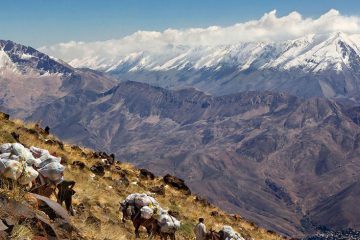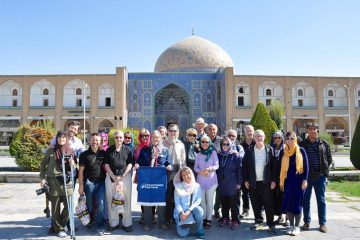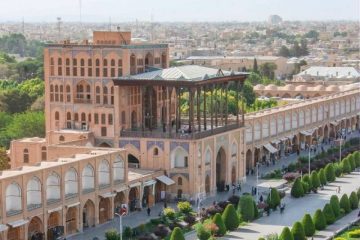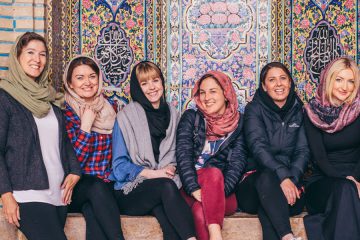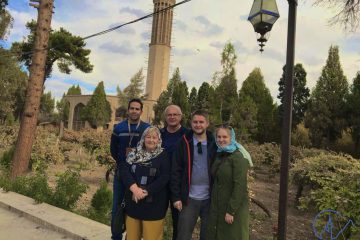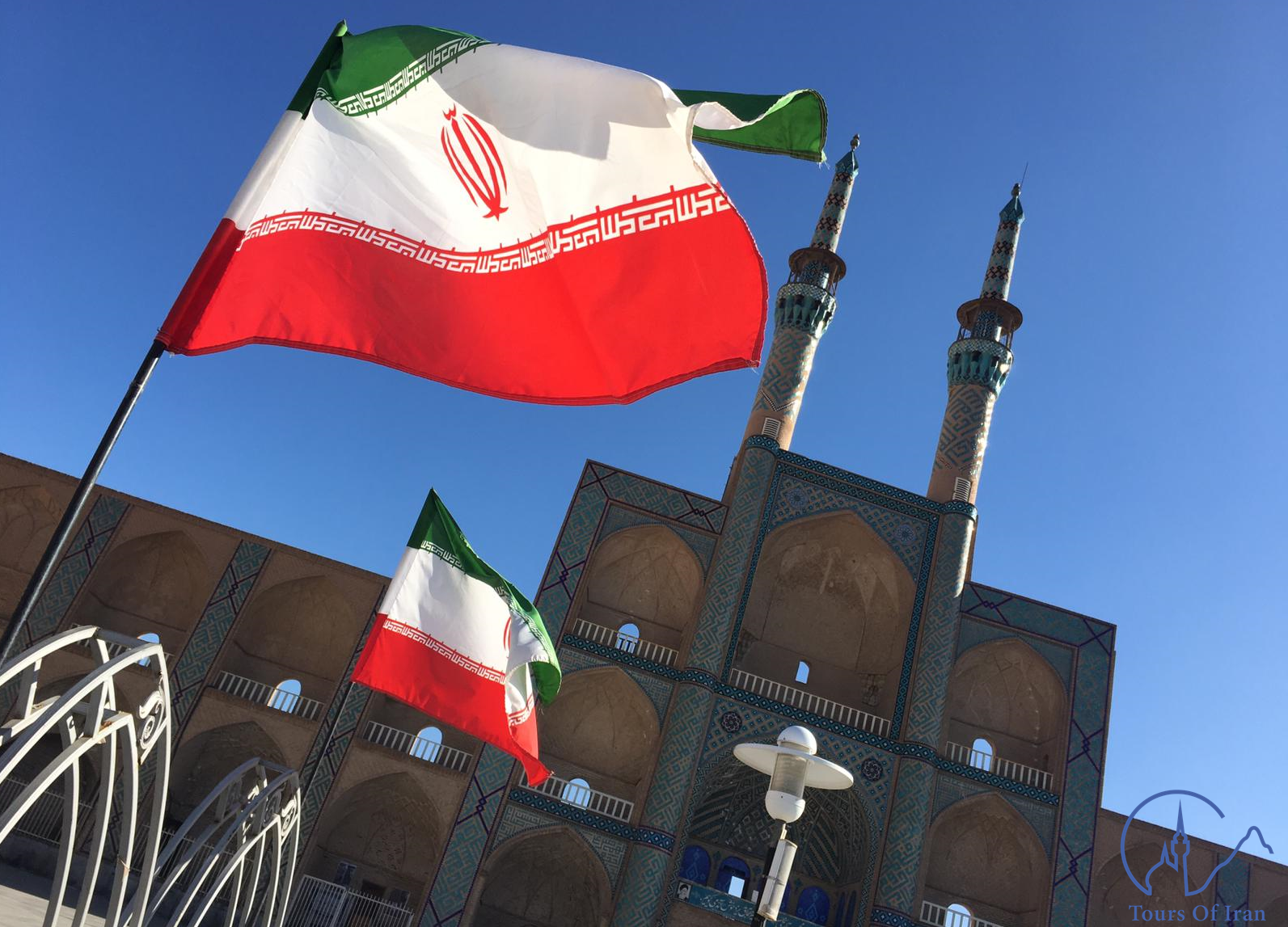
6 Things To Know Before Traveling to Iran [2024]
So you are Traveling to Iran in 2024, welcome to the fascinating world of Iran. This land boasts a remarkable history, breathtaking landscapes, and a vibrant cultural heritage.
Suppose you plan to embark on an unforgettable journey to Iran in 2024. In that case, this comprehensive guide will equip you with all the details to make your trip seamless and enriching.
From visa requirements to transportation options and the best places to explore, get ready to immerse yourself in the wonders of Persia.
Enjoy your Travelling to Iran,
Let’s dive in:
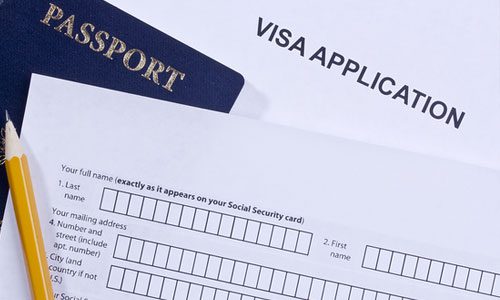
Visa Requirements for Traveling to Iran in 2024
When traveling to Iran in 2024 As an international traveler, obtaining the correct visa is essential for your trip to Iran. Types of visas that are available at the moment:
Tourist Visa
The tourist visa allows you to explore Iran for a specified duration. You can obtain this visa from your home country’s Iranian embassy or consulate.
Visa on Arrival
Citizens of some countries can acquire a visa on arrival at major Iranian airports. Ensure your nationality is eligible for this facility and have the necessary documents ready.
E-Visa
Iran also offers an electronic visa (e-visa) application system, allowing you to apply online for a tourist visa before arrival.
Visa Extension
Suppose you wish to extend your stay in Iran. You can apply for a visa extension through the Iranian police’s Foreign Nationals Affairs Department.
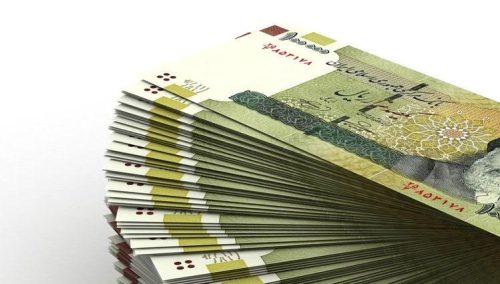
Currency and Exchange Rates in Iran
Iran’s official currency is the Iranian Rial (IRR), but locals commonly use Toman as a more practical denomination.
In Jan 2024, the exchange rate is approximately one USD = 54,000 Tomans = 540,000 Rials.
Using Toman in Everyday Transactions.
Locals often refer to prices in Tomans rather than Rials when making purchases or negotiating prices. Remember to clarify the currency to avoid any confusion.
Currency Exchange Tips
Exchange your currency at official exchange offices or banks for better rates and avoid unregulated currency exchanges. It’s advisable to carry sufficient cash, as credit cards from foreign banks may not be widely accepted.
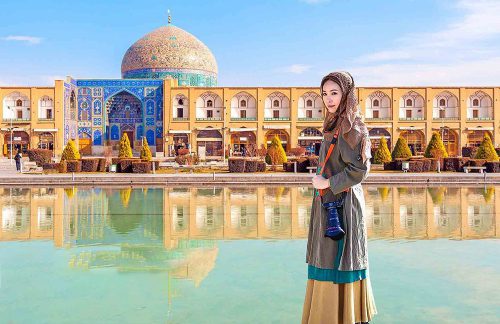
3. Traveling to Iran and Cultural Etiquette
Iran has a conservative dress code, especially in public places and religious sites. Understanding and respecting the dress code is crucial during your journey.
Dress Code for Women
Women must wear a headscarf (hijab) that covers their hair, and their clothing should be loose-fitting, covering their arms and legs.
Dress Code for Men
Men should avoid wearing shorts in public places, and it’s respectful to dress modestly.
Etiquette in Religious Sites
When visiting mosques and shrines, men and women should dress more conservatively, and women may be required to wear a chador (a full-body cloak).
4.Language and Communication in Iran
The official language of Iran is Persian (Farsi). While many Iranians speak English in tourist areas, learning a few basic Persian phrases can enhance your interactions and show appreciation for the local culture.
Persian Language Basics
- Hello: Salam
- Thank You: Mamnoon
- Yes: Bale
- No: Na
- Please: Lotfan
- Excuse me: Bebakhshid
- Goodbye: Khodahafez
Embracing Local Phrases
Locals appreciate visitors making an effort to use Persian phrases. Simple greetings and expressions will undoubtedly earn you smiles and create connections.
English in Tourist Areas
You’ll find English-speaking staff in major tourist destinations and hotels who can assist you with information and services.
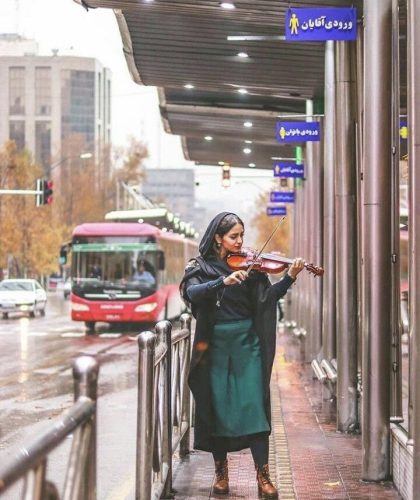
Transportation Options in Iran
Navigating Iran is made easy with various transportation options available to travelers.
Metro and Public Transportation in Tehran
In Tehran, the metro system is a convenient way to travel within the city. Public buses also serve as an affordable means of transport.
Intercity Buses
Inter-city buses are a popular choice for travel between cities, offering comfort and numerous routes.
Trains and Rail Travel
Iran’s rail network connects major cities and offers scenic journeys through picturesque landscapes.
Domestic Flights
Domestic flights operate between major cities for long-distance travel or to save time.
Taxis and Ride-sharing Services
Taxis and ride-sharing services are readily available in urban areas, providing flexible transportation options.
Now Let’s dive into the best experiences that await you while traveling to Iran:
6. The Best Things to Do When Traveling to Iran in 2024
Iran is a treasure trove of historical and cultural wonders. These are the best things you can do when traveling to Iran:
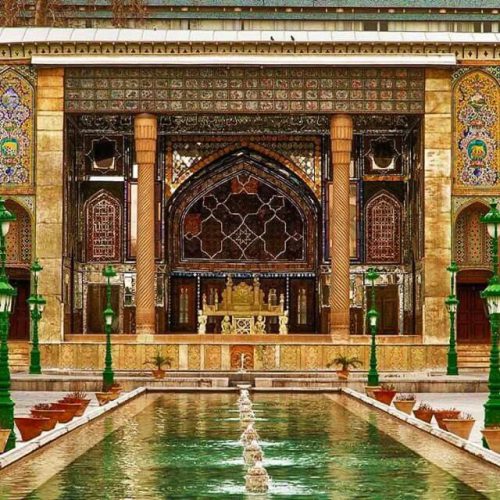
Explore Tehran, The Capital of Iran
Tehran, the vibrant capital, presents a perfect blend of modernity and tradition.
Don’t miss these three must-visit places in Tehran when traveling in Iran:
- Golestan Palace: A Glimpse into Iran’s Royalty
Discover the luxury of Iran’s Qajar dynasty in this UNESCO-listed palace complex adorned with magnificent architecture and lush gardens. - National Museum of Iran: Unveiling Ancient ArtifactsJourney through Iran’s history with an impressive collection of artifacts showcasing the country’s rich heritage.
- Tabiat Bridge: A Modern Architectural MarvelStroll on this iconic bridge, which offers breathtaking views of Tehran’s skyline and the Alborz Mountains.
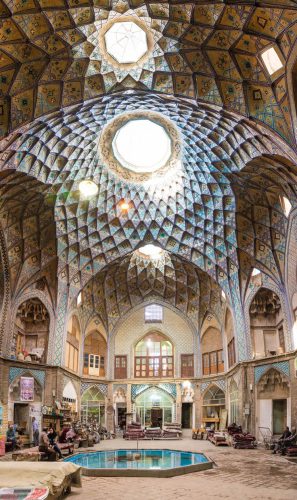
Experience the Charm of Kashan
Step into a world of timeless elegance and captivating history as you explore the enchanting city of Kashan.
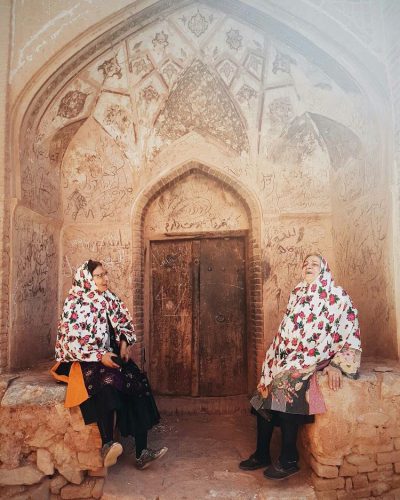
If you are traveling to Iran in 2024, These are 3 best places to visit in Kashan:
- Fin Garden: A Serene OasisStep into a tranquil paradise adorned with fountains, pavilions, and lush greenery, creating a peaceful ambiance.
- Abyaneh Village: Step Back in TimeVisit the captivating red-clay village of Abyaneh, where ancient traditions and unique architecture enchant visitors.
- Sultan Amir Ahmad Bathhouse: An Architectural GemAdmire the intricate tilework and exquisite design of this well-preserved 16th-century bathhouse.
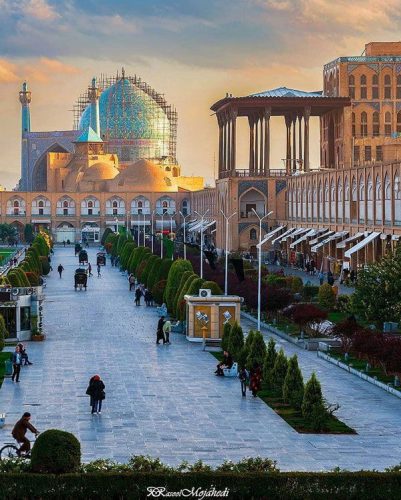
Discover the Magnificence of Esfahan
Esfahan, often called “Half of the World,” captivates with its grandeur and beauty.
Explore these 3 iconic sites in Esfahan when you travel to Iran:
- Naqsh-e Jahan Square: A UNESCO World Heritage Site
Marvel at one of the world’s largest squares, surrounded by stunning landmarks like Imam Mosque and Sheikh Lotfollah Mosque. - Sheikh Lotfollah Mosque: A Masterpiece of Safavid Architecture
- Si-o-se Pol BridgeEnjoy a leisurely walk along this historic bridge, beautifully illuminated at night, creating a romantic ambiance.
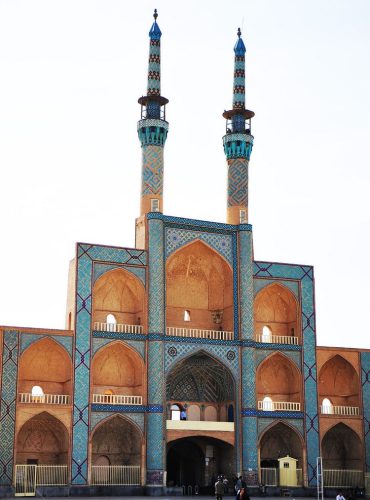
Unravel the Beauty of Yazd
While traveling to Iran, Don’t forget Yazd, a UNESCO-listed city that showcases its unique architectural heritage and Zoroastrian culture.
3 Must-visit places in Yazd:
- Yazd Old Town: A Maze of Mud-Brick ArchitectureWander through narrow alleys and admire the traditional adobe buildings, offering a glimpse into ancient Iranian urban planning.
- Tower of Silence: Exploring Zoroastrian HeritageLearn about Zoroastrian funeral traditions at this ancient circular tower where the deceased were laid to rest.
- Jame Mosque of Yazd: A Spiritual HavenImmerse yourself in the serenity of this grand mosque, boasting intricate tilework and elegant calligraphy.
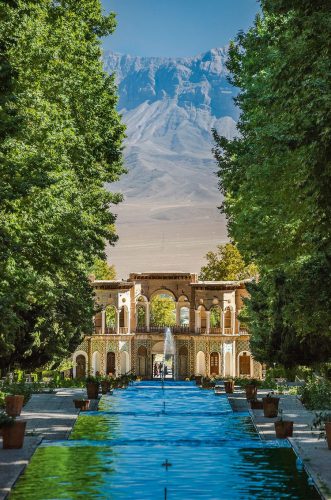
Embark on an Adventure in Kerman
When traveling in Iran, Kerman awaits you with its desert landscapes and historical marvels.
3 Key attractions to visit in Kerman:
- Lut Desert: Witness the Otherworldly LandscapeVisit the mesmerizing Lut Desert, known for its surreal dunes and extreme temperatures, a UNESCO World Heritage site.
- Shazde Garden: A Paradise in the DesertDiscover the lush greenery and stunning architecture of Shazde Garden, an oasis amidst the desert.
- Ganjali Khan Complex: A Glimpse into the PastExplore this historical complex featuring a majestic bathhouse, caravanserai, and a vibrant bazaar.

Delight in the Poetry and Gardens of Shiraz
Shiraz, the city of poets and roses, will captivate your heart.
If you travel to Iran, don’t miss these 3 places in Shiraz:
- Persepolis: A Window into Ancient CivilizationMarvel at the awe-inspiring ruins of Persepolis, the ancient ceremonial capital of the Achaemenid Empire.
- Hafez Tomb: Paying Tribute to the Beloved PoetPay your respects to Hafez, one of Iran’s most revered poets, at his beautifully adorned tomb.
- Eram Garden: A Symphony of FragrancesStroll through the lush greenery of Eram Garden, an exquisite Persian paradise adorned with colorful flowers.
Soak in the Culture of Southern Iran
The southern region of Iran offers a unique cultural experience.
Don’t miss these gems when traveling in Southern Iran:
- Qeshm Island: Exploring Nature’s MasterpiecesDiscover the geological wonders of Qeshm Island, home to natural wonders like the Valley of Stars and Chahkooh Canyon.
- Bandar Abbas: Embracing Local TraditionsImmerse yourself in the local culture of Bandar Abbas and witness the traditional lifestyle of its friendly inhabitants.
- Hormuz Island: A Kaleidoscope of ColorsEmbark on a journey to the captivating Hormuz Island, renowned for its vibrant colored soil and breathtaking beaches.
Embrace the Northern Charms of Iran
The northern region of Iran is a lush paradise with charming destinations:
- Gilan Province: A Journey through Green LandscapesExperience the beauty of Gilan’s lush forests, verdant rice paddies, and stunning landscapes.
- Masouleh Village: A Picturesque Mountain VillageBe enchanted by the quaint architecture and terraced houses of Masouleh, nestled amid picturesque mountains.
- Anzali Lagoon: A Haven for BirdwatchersVisit the Anzali Lagoon, a paradise for birdwatchers, home to various bird species and stunning wetlands.
Discover the Wonders of Ardebil and Tabriz
The northwestern part of Iran is a treasure trove of historical landmarks.
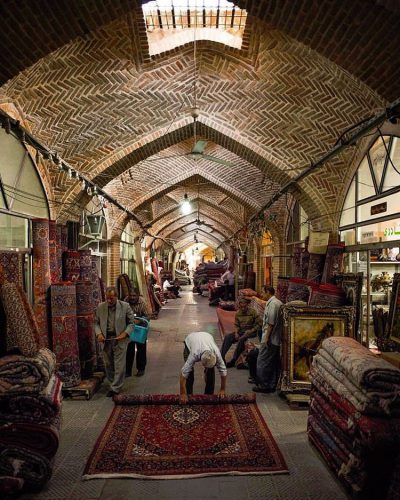
Best 2 places to visit in Tabriz and Ardabil while traveling north west of Iran:
- Sheik Safi Mausoleum: A UNESCO Heritage SiteExplore the impressive complex of Sheik Safi Mausoleum, a stunning blend of Islamic and Azerbaijani architecture.
Sarein Hot Springs: A Relaxing Retreat
Indulge in the therapeutic waters of Sarein’s natural hot springs, known for their healing properties and stunning mountain views. - Tabriz Bazaar: An Ancient Commercial HubGet lost in the labyrinthine alleys of Tabriz Bazaar, one of the oldest and largest covered markets in the world.
Explore the Enchanting Western Iran
The western part of Iran offers an array of historical and natural marvels:
- Bisotun: A Testament to Ancient Rock CarvingsUnravel the secrets of Bisotun’s UNESCO-listed rock reliefs, depicting ancient inscriptions of Darius the Great and others.
- Zanjan: Home of the World’s Third-Largest Brick DomeMarvel at the awe-inspiring beauty of the Dome of Soltaniyeh, a UNESCO World Heritage site and a masterpiece of Islamic architecture.
- – Hamedan: Avicenna’s Tomb and Ancient InscriptionsVisit the tomb of Avicenna, a renowned Persian polymath, and explore the fascinating Ganjnameh, an ancient cuneiform inscription.
Conclusion of traveling to Iran in 2024
Traveling to Iran in 2024 promises an enchanting journey filled with diverse experiences that reflect the country’s rich history and cultural tapestry. From exploring majestic palaces and ancient ruins to savoring the warmth of Persian hospitality, each moment in Iran unveils a new facet of its charm.
As you embark on this extraordinary adventure, immerse yourself in the local traditions, flavors, and landscapes that make Iran a truly unforgettable destination.
contact professional tours of Iran guides.
FAQs:


